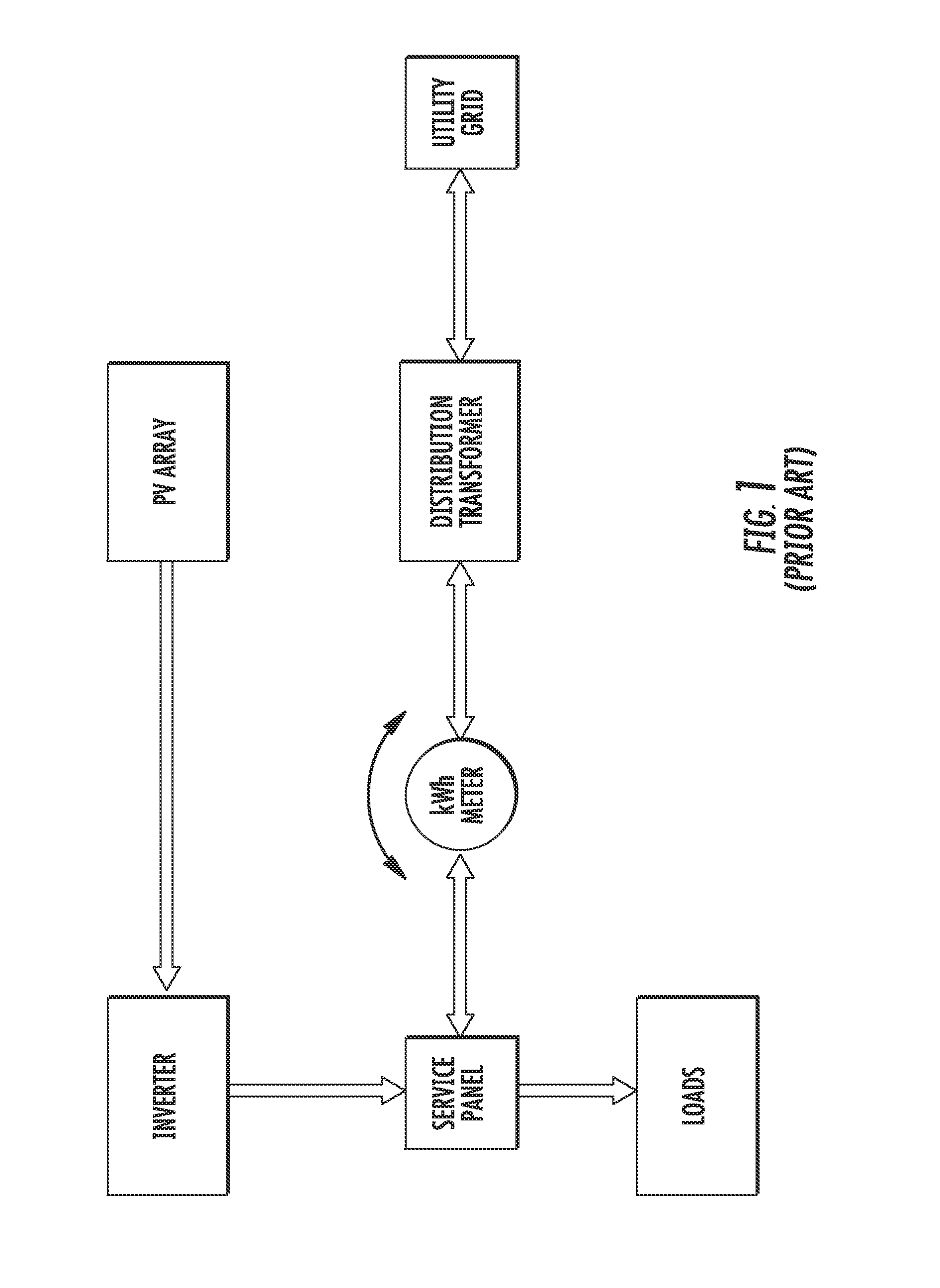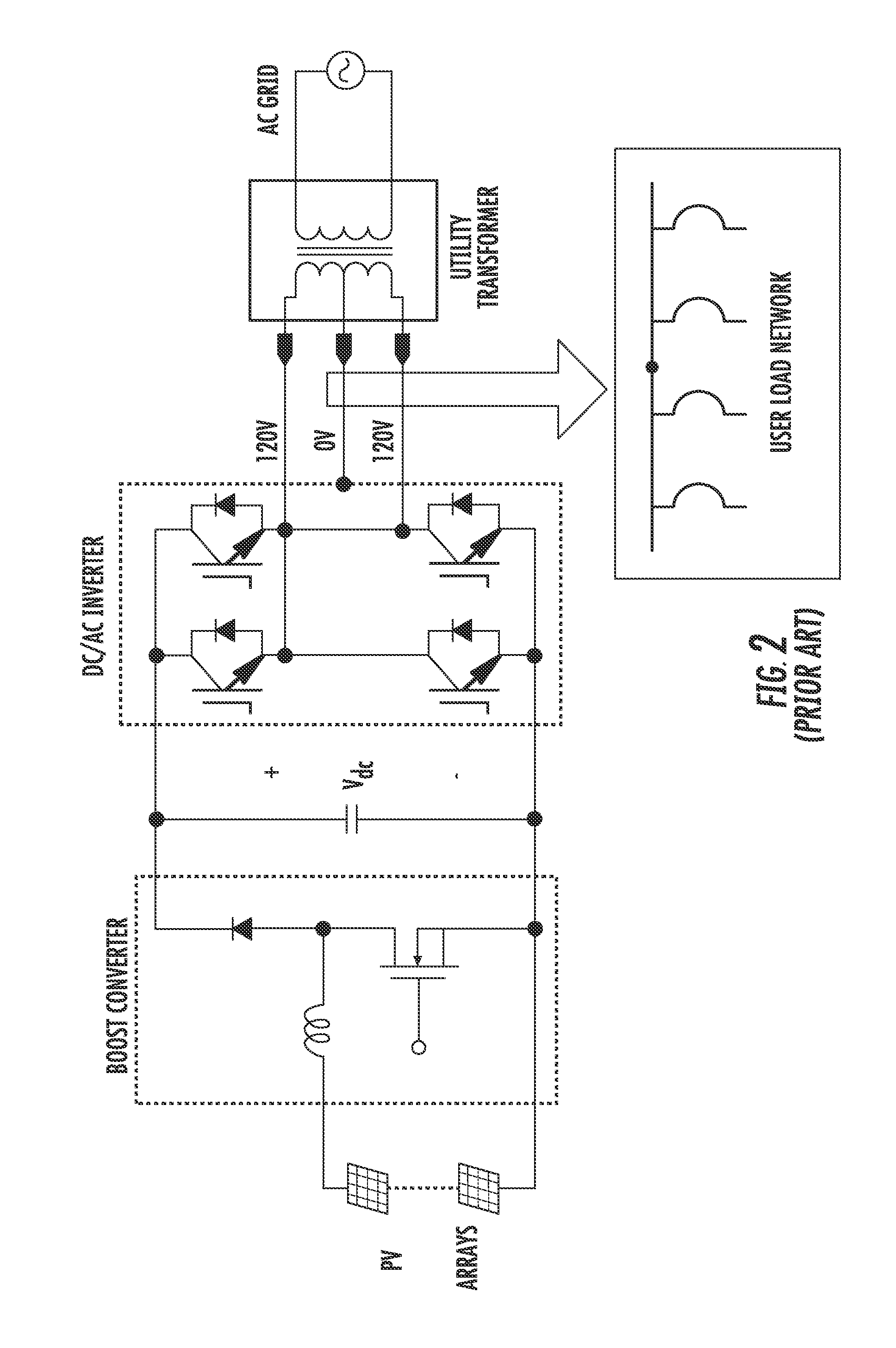Intelligent photovoltaic interface and system
a photovoltaic interface and intelligent technology, applied in the field of photovoltaic interface and system, can solve the problems of 40 to 50% of the cost of solar panels themselves, the installation and integration of solar panels, and the cost of solar panels is about $8 to $9 per watt of installed capacity, so as to improve the market penetration of pv systems, simplify the integration of pv panels, and improve the effect of market penetration
- Summary
- Abstract
- Description
- Claims
- Application Information
AI Technical Summary
Benefits of technology
Problems solved by technology
Method used
Image
Examples
Embodiment Construction
[0025]Referring to the drawings, an exemplary photovoltaic (PV) interface system according to the present invention is illustrated in FIG. 7 and shown generally at reference numeral 10. The system 10 integrates a PV system or array 11 with a utility grid 12 from both a power standpoint and a controls standpoint using a photo voltaic interface (intelligent grid-connected solar inverter (IGCSI)) 13 which replaces both a conventional solar inverter and a distribution transformer (both shown in FIGS. 1-4), thereby producing a single power-electronics based solution that allows simple integration while providing additional functionality to both a user or load 14 and the grid 12. The IGCSI 13 includes power conversion circuitry 16, a control and monitoring system 17 that allows seamless integration with utility controls and automations systems, and a communications interface 18. See FIG. 8.
[0026]The IGCSI 13 may be used as a solution to systems where utility distribution transformers, PV ...
PUM
 Login to View More
Login to View More Abstract
Description
Claims
Application Information
 Login to View More
Login to View More - R&D
- Intellectual Property
- Life Sciences
- Materials
- Tech Scout
- Unparalleled Data Quality
- Higher Quality Content
- 60% Fewer Hallucinations
Browse by: Latest US Patents, China's latest patents, Technical Efficacy Thesaurus, Application Domain, Technology Topic, Popular Technical Reports.
© 2025 PatSnap. All rights reserved.Legal|Privacy policy|Modern Slavery Act Transparency Statement|Sitemap|About US| Contact US: help@patsnap.com



